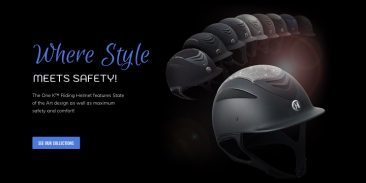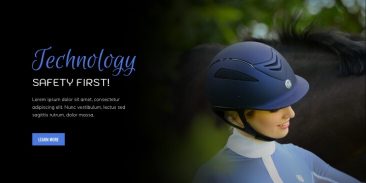The MIPS Brain Protection System (BPS) is designed to add protection against the rotational motion (or kinematics) transmitted to the brain from angled impacts to the head. The rotational motion is a combination of rotational energy (angular velocity) and rotational forces from angular acceleration that both affect the brain and increases the risk for minor and severe brain injuries. MIPS’ added protection system has been proven to reduce the rotational motion when implemented in a helmet by absorbing and redirecting energies and forces otherwise transmitted to the brain.
Where can I see my MIPS layer?
Initially, the MIPS layer was found between the helmet’s shell and the EPS/foam helmet filling. More recent and common versions have the MIPS layer underneath the EPS, between the helmet and the head. This is the most common low friction layer on the market today.
How Does MIPS Work?
The core of the MIPS BPS is a low friction layer that allows the head to move 10-15 mm relative to the helmet in all directions, reducing rotational motion to the brain.
Are MIPS Helmets Really Better?
Having the MIPS BPS inside your helmet can reduce the risk of brain damage. Falling at an angle creates rotational motion and science has shown that our brains are very sensitive to rotational forces. In an angled impact, these forces may transfer to your brain, which can cause severe injuries.
What is MIPS on a helmet?
The MIPS Brain Protection System (BPS) is found inside the helmet, generally between the comfort padding and the EPS (a high-quality foam used to reduce energy).
For certain impacts, the MIPS BPS can reduce harmful forces transmitted to the brain.
MIPS stands for Multi-directional Impact Protection System.
For certain impacts, the MIPS BPS can reduce harmful forces transmitted to the brain.
What is rotational motion?
Rotational motion, in these cases, is the result of an angled impact to the head. A quick, sudden, abrupt stop, will cause the brain to move or stretch. This happens mainly due to the brain’s suspension in the cerebrospinal fluid and because the brain itself has shear properties similar to water.
Why is rotational motion harmful?
It is known that the human head is more sensitive to rotational motion than linear motion.
From an engineering perspective, rotational motion is a combination of rotational energy (angular velocity) and rotational forces (angular acceleration) that both affect the brain and increase the risk for minor and severe brain injuries.
The reason that the brain is more sensitive to rotational motion is that the brain is very much like water or a gel when it comes to its shear properties. The brain, like water, is also incompressible. However, the tissue in the brain can stretch when the different parts of the brain move relatively to each other – as a result of rotational motion. This strain in the brain can cause concussions or even worse damages. Therefore, a linear motion will not affect the brain as much as a rotational motion.
How does rotational energy affect the brain?
Several researchers have linked severe brain injuries like Diffuse Axonal Injury (DAI) and Subdural Hematoma (SDH) to rotational motion transmitted to the brain from angled impacts.
Mild Traumatic Brain Injury (MTBI) or concussion is also believed to be caused by rotational motion.
Does MIPS work at any impact angle?
Yes, MIPS BPS works independently of impact direction. It is a Multi-Directional Impact Protection System.
How much relative motion does the MIPS BPS provide?
The MIPS low friction layer moves about 10-15 mm in any direction. You can feel the movement by placing your hand inside the helmet and rotating the MIPS layer.
What specific mechanisms does MIPS BPS protect against?
MIPS BPS has been proven to reduce the rotational motion from angled impacts when implemented in a helmet by absorbing and redirecting energies and forces otherwise transmitted to the brain. By a small movement in the low friction layer relative to the helmet (10 – 15 mm) at the brief moment of an angled impact (5 – 10 milliseconds), MIPS BPS lets the head continue in the direction to which it was originally heading without transferring the rotational energies to the brain. The absorption is due to friction heat and also that MIPS BPS will spread the load to a larger area of the helmet liner.
Does MIPS BPS influence fit, look, and comfort?
The MIPS low-friction layer is designed to add minimal volume and weight. Each model of helmet gets a layer that’s custom-designed and engineered to fit the ventilation, shape, and other features of the helmet style.
Those helmets that are retrofitted with MIPS BPS might see a reduction in helmet size by one size. New models will not be affected in this way.
Does MIPS add a lot of extra weight?
The MIPS low friction layer weights from 25 to 45 grams, depending on the helmet model.
Do the hair and scalp have the same functionality as MIPS BPS?
The force between the head and the helmet is very high in the event of an impact. To get a relative motion between the helmet and the head, a low coefficient of friction is needed. The scalp may help to reduce the rotational motion to the brain in a small way, but not to a substantive degree.
How do I clean my MIPS helmet?
Clean the helmet using a soft cloth or sponge, warm water, and mild soap (such as mild dish soap). Allow it to air dry in an open area, and store in a cool, dry place when it’s not in use.
Do not tamper with or remove the MIPS low friction layer by any means.
If you have more questions about caring for your helmet, please contact One K helmets and/or your local dealer.
What to think of when attaching accessories, like cameras, lamps or mirrors etc.
Remember to never fasten the accessory so it prohibits the MIPS low friction layer to move freely inside the helmet.
Besides that, follow the installation manual from the manufacturer of the accessory.
Can the consumer add MIPS to a helmet?
No. The MIPS BPS cannot be retrofitted to a helmet. It is mounted in the production process of the helmet.
How is MIPS tested and validated?
A helmet is approved by testing the helmet at between 6.0-7.5m/s at a 45-degree impact angle against grinding paper. Three different impact sites are tested. The same helmet model is compared with and without the MIPS BPS.
Why is the impact speed 6.2 m/s or 7.5 m/s?
The impact speed chosen for bike, snow, and equestrian helmets are 6.2m/s and 7.5m/s for motorcycle helmets. The impact angle is always 45 degrees. The speeds for bike helmets were chosen based on real accident reconstruction studies (Verschueren et al 2009).
How is MIPS tested and validated?
We use a Hybrid III dummy head made out of aluminum covered with rubber skin. This type of dummy head is the same as used in testing within the automotive industry.





